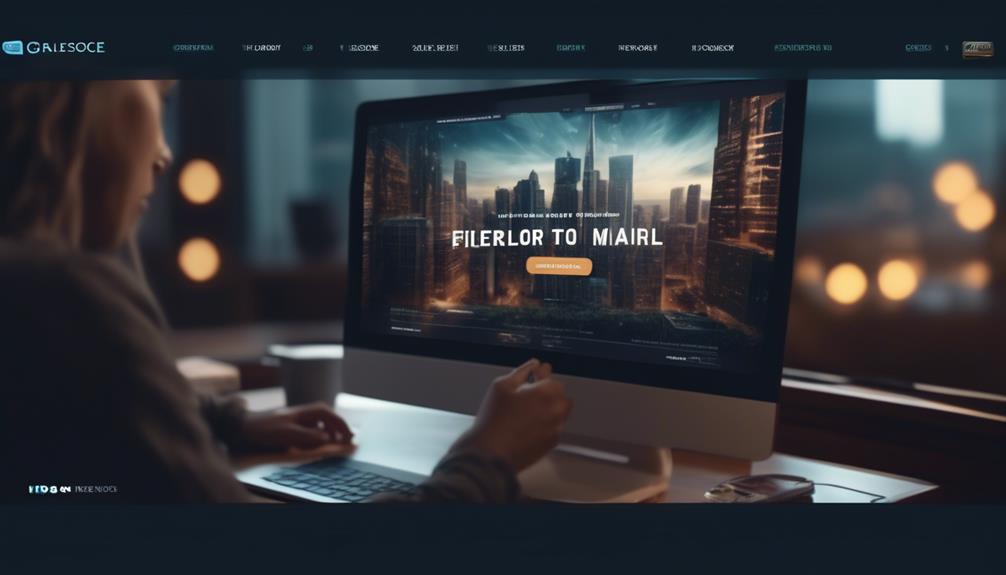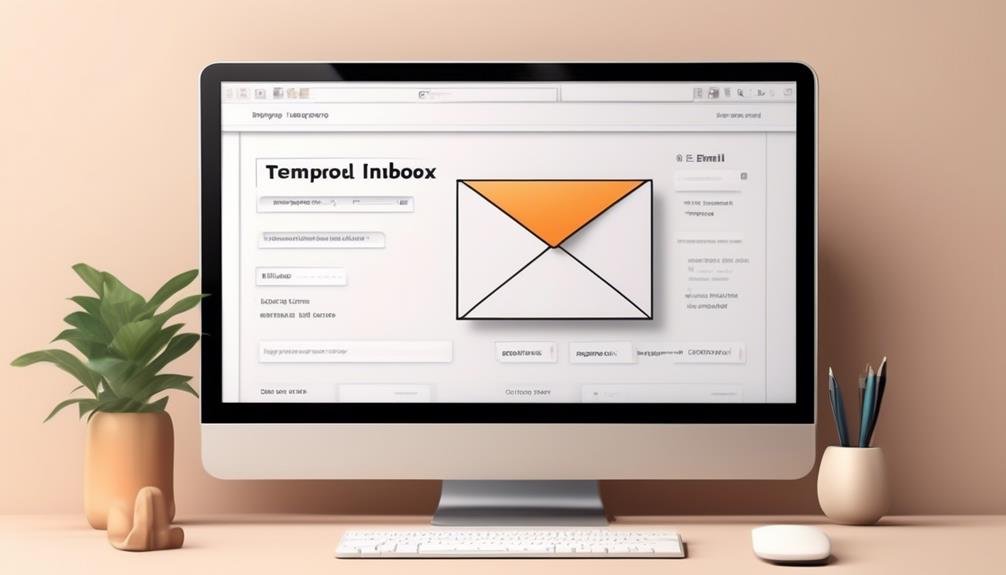When it comes to crafting professional and visually attractive email messages, Salesforce HTML Email Templates offer a robust solution.
Many of us understand the importance of creating emails that not only look polished but also effectively represent our brand.
However, navigating the intricacies of HTML templates within the Salesforce platform can be a challenge.
Let’s explore how utilizing Salesforce HTML Email Templates can elevate our email marketing efforts and streamline our communication processes.
Key Takeaways
- Salesforce offers a variety of email template options, including Classic and Lightning templates, each with their own strengths and limitations.
- Classic templates provide simplicity and customization, while Lightning templates offer enhanced capabilities for personalization.
- When creating email templates in Salesforce, consider the different template types available and their limitations, and use them effectively for engagement and personalization.
- Testing and optimizing email templates before sending is crucial to ensure consistent appearance, accurate content, functional links, and successful personalization.
Types of Salesforce Email Templates
Exploring the various types of Salesforce email templates allows us to tailor our communication to best suit the needs and preferences of our clients. When it comes to email templates, Salesforce offers a range of options to ensure that our messages are impactful and personalized.
From Classic Email Templates, including simple text, HTML with Classic Letterhead, Custom HTML, and Visualforce, to Lightning Email Templates, which boast Enhanced Letterhead, dynamic content, rich text, merge fields, and a user-friendly drag-and-drop editor, we’ve the tools to create compelling and visually appealing emails.
Understanding the differences between these types of templates is crucial for optimizing our communication strategy. With Classic Email Templates, we can leverage the simplicity of text-based emails or the customization of HTML and CSS to craft messages that align with our brand identity.
On the other hand, Lightning Email Templates offer enhanced capabilities, such as dynamic content and merge fields, allowing us to personalize each email with relevant information based on the recipient’s profile. Mastering the use of merge field values and the intricacies of HTML and CSS within these templates empowers us to create engaging and impactful email communications that resonate with our clients.
Limitations of Salesforce Email Templates

As we consider the various types of Salesforce email templates and their capabilities for crafting impactful and personalized messages, it’s important to be aware of the limitations that may impact our communication strategy. When working with Salesforce email templates, we need to keep in mind the following limitations:
- Platform Limitations:
- Some limitations are based on the Salesforce account and platform version, which may affect the number of templates or features available.
- File Size Restrictions:
- Image and attachment file sizes are restricted for email templates, which can impact the visual appeal and content richness of our emails.
- Formatting and Design Constraints:
- There are limitations on HTML and CSS formatting and design compared to dedicated design tools, affecting the customization and layout options for our emails.
Understanding these limitations is crucial for optimizing our use of Salesforce email templates. For instance, the character limits for email body and subject fields can influence the depth of our message, while the restrictions on merge fields may impact the level of personalization we can achieve. By acknowledging these constraints, we can adapt our strategies to maximize the effectiveness of our email communications.
Creating Email Templates in Salesforce
When creating email templates in Salesforce, we can choose from a variety of types to tailor our messages to our audience’s needs and preferences. The options include Classic, Text, HTML with Classic Letterhead, Custom HTML, Visualforce, Lightning, and Enhanced Letterhead templates. Each type offers unique features and customization options to create engaging and personalized emails.
For instance, Visualforce templates enable advanced customization, making it suitable for creating highly tailored content. Additionally, the use of custom objects within email templates allows for the incorporation of specific data relevant to the recipient, further enhancing the personalization of the message.
Understanding the limitations of Salesforce email templates, such as file size limits, merge field restrictions, and design constraints, is crucial when creating effective templates. By leveraging the various template types and being mindful of these limitations, we can ensure that our email content isn’t only visually appealing but also optimized for deliverability and engagement.
Testing and Sending Salesforce Email Templates

To ensure the effectiveness of our Salesforce email templates, we thoroughly test and meticulously refine them before sending to our valued customers. Our testing process is comprehensive and customer-focused, ensuring that every email template meets the highest standards of quality and relevance.
When testing our Salesforce HTML email templates, we focus on three key areas:
- Visual Rendering: We preview the email template across various devices and email clients to ensure that it appears as intended, regardless of the recipient’s setup.
- Content and Links: Our team meticulously reviews the content and verifies all links within the email template to guarantee that the information is accurate and all links are functional.
- Personalization and Dynamic Content: We test the personalization and dynamic content features to ensure that each recipient receives a tailored and engaging email experience.
Once the testing phase is complete, we proceed with sending the Salesforce email templates to our customers’ email addresses, knowing that they’ve been rigorously evaluated and optimized for maximum impact.
Choosing Professional Email Templates in Salesforce
After rigorously testing and refining our Salesforce HTML email templates, we now turn our focus to selecting professional email templates within Salesforce that will elevate our customer communications to new heights.
Salesforce offers a range of customizable professional email templates that not only save time but also ensure consistency in our communication with customers. By utilizing these templates, we can maintain a uniform brand image across all customer interactions, promoting a professional and cohesive appearance.
Additionally, the ability to share email templates among team members fosters collaboration and efficiency, streamlining our communication processes. Another advantage is the capability to create email templates in multiple languages, allowing us to cater to diverse global audiences.
As we delve into the process of choosing professional email templates, we’re committed to leveraging this functionality to enhance our Activity History, track the success of emails sent, and tailor custom templates to meet the specific needs of our customers.
Frequently Asked Questions
How Do I Add an HTML Email Template to Salesforce?
We can add an HTML email template to Salesforce by following these steps:
- Navigate to the Email Templates section.
- Select ‘New Template.’
- Choose the HTML with Classic Letterhead option.
- Proceed to customize the template with our desired content and styling.
- After saving the template, we can use it to create personalized and visually appealing emails for our contacts or leads.
Can Salesforce Send HTML Emails?
Absolutely, we can send HTML emails in Salesforce.
We use Lightning Email Templates to craft responsive designs, add dynamic content, and personalize messages.
With our advanced customization options, we can create visually appealing emails that reflect our brand.
Plus, we’ve the flexibility to send these HTML emails through both the Salesforce Classic and Lightning interface, providing a seamless experience for our recipients.
How Do I Use HTML as an Email Template?
We use HTML as an email template by creating a custom design with HTML code.
We can customize layout, fonts, colors, and design elements to match our brand and engage our audience.
By incorporating responsive design techniques, we ensure our emails are accessible across various devices.
Using merge fields and dynamic content, we personalize the emails for each recipient.
This allows us to create visually appealing and impactful email communications.
How Do I Create a Template Email in Salesforce?
Creating a template email in Salesforce is simple!
We start by navigating to the Email Templates section and selecting ‘New Template.’
Then, we can choose the template type, such as text, HTML, Visualforce, or Lightning.
From there, we customize the content, merge fields, and design to fit our needs.
Finally, we save the template for future use.
It’s a straightforward process that allows for personalized and professional communication with our contacts.
Conclusion
In conclusion, using Salesforce HTML Email Templates can greatly enhance our email communication.
Did you know that businesses using personalized email templates see a 14% increase in click-through rates and a 10% increase in conversion rates?
By creating visually appealing and personalized emails, we can improve our brand image and engage our customers more effectively.
Let’s leverage the power of Salesforce HTML Email Templates to elevate our email marketing efforts.










